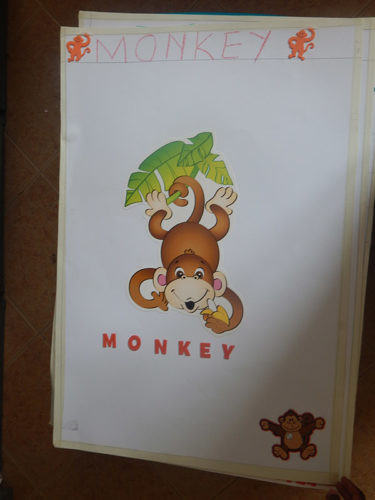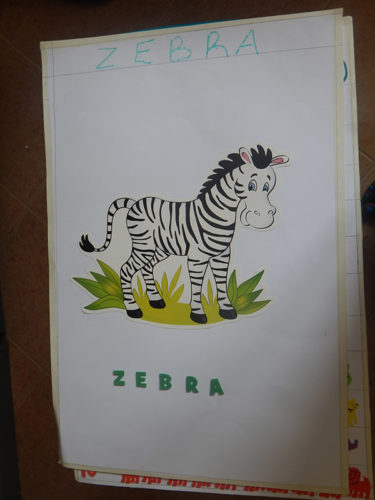News from Rumbek
Developing our teaching methods at Loreto Primary School
At Loreto Primary School, we are always delighted to give light to an often too dim world. Currently we are running a sensory project as part of our in-service teacher training program for capacity building.
The sensory project is designed to help teachers in the lower primary (Kindergarten through Primary 3), to develop teaching aids targeting different learning modes. It is child-centered and uses visual charts, tactile aids and audiovisual materials to help young learners to develop their basic literacy and numeracy skills.
This month, the lower primary teachers created a wide range of colourful charts for their classrooms. According to Eric, a Primary 3 teacher, “We make charts depending on what we are learning at the moment. We’re doing multiplication tables and the charts help pupils learn fast and understand more because they can see clearly and read loudly.”
Most charts feature shapes, colors, numbers and number values, letters and letter sounds, multiplication tables, domestic and wild animals, and parts of the human body.
There are also charts to encourage early grade reading with verbs or ‘action words’ that relate to learners’ every day activities such as ‘drinking, eating, bathing, singing and jumping.’
The charts are meant to enhance learning through visual presentation by allowing students to create mental images of the concepts they are learning. This helps them to retain the information and deepens the learning experience.
Chidir, a boy in Primary 1, is happy to describe the charts in his classroom. “This is our book,” he says, pointing to the charts, “I read colours, blue, green, red, capital letters, small letters a, b, c, d. This is teacher. This is lion. At 1 o’clock lion will eat. I love my charts.”
The charts help our young learners to tell stories about the material they are learning and they give students a way to express themselves. This is an important foundation for developing their early language skills.
 Older students also recognize that the charts are an important tool for developing their literacy and numeracy skills. Abednego, a boy in Primary 2 explains, “We read alphabet and numbers. I like charts they help me know to read and become a happy boy.”
Older students also recognize that the charts are an important tool for developing their literacy and numeracy skills. Abednego, a boy in Primary 2 explains, “We read alphabet and numbers. I like charts they help me know to read and become a happy boy.”
Monica believes that the charts are highly effective for memorizing multiplication tables, an area in which many school children struggle. “I can read multiplication tables, add and subtract numbers from charts, charts help me know to multiply numbers.”
Most of our young students are unable to communicate in English, although English is the official language for education in South Sudan. However, our teachers are working to develop lessons that would enable learners to speak English fluently and to communicate with ease.
Joy, a kindergarten teacher uses audiovisual programs and fairy tales to help develop her students’ understanding of spoken and written English. The bright colours, moving images and new sounds in programs such as ‘Thomas the Tank Engine’ are very useful for engaging students. The stories are then translated into Dinka, our students’ mother tongue, and they are encouraged to describe what they learned and to ask questions.
This learning is enhanced by the use of ‘action words’ charts in the classroom to promote the use of English in describing the on-screen actions that they viewed.
For Joy, the charts are essential for capturing the interest of her students, “The charts engage young pupils whose concentration span is short and bring the lesson to life.”
As the school week winds down on Fridays, students review what they have learned, using the charts to describe their week. “This is toy. Lion, monkey, frog, zebra. This is girl. I cook with my toys. Monday I come to school again,“ says Amuor, a kindergarten girl, brimming with excitement.
Sign up to our newsletter
Keep up to date with news, fundraising events and activities
Want to help us further? Make a Donation











